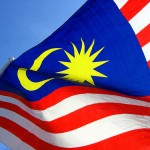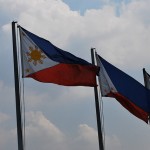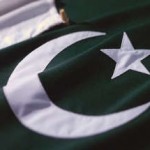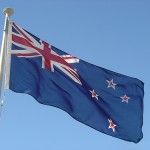Famous in the mainstream travel circle as the land of yurts and nomads, Mongolia is perhaps best remembered as the motherland of Genghis Khan, that Mongol emperor whose conquests made him a much-feared character in world history. But even the West knows that despite the blood-tinged history associated with his name, Genghis Khan is indeed a name to be reckoned with. After all, his empire stretched from as far north as Siberia to farther west to Eastern Europe, not a modest feat for a single person considering it all started in an unassuming arid country covered in shrub.
Mongolia’s public holidays are as sparse as the population of the country itself, but speak a lot about the country’s culture, heritage, values and beliefs. If you happen to be anywhere near the capital, Ulaanbaatar, take advantage of the few days that you will see the remains of Genghis Khan’s empire in full color.
Below is the list of Mongolia public holidays 2013.
New Year’s Day – Tuesday, 1 January 2013
Mongols follow the lunisolar calendar, but acknowledge the international New Year’s Day and celebrate it with lights, decorated fir trees and Santa Claus with his little Snow Girls.
Tsagaan Sar – Monday -Tuesday, 11 to 12 February 2013
The Mongolian version of Lunar New Year, “Tsagaan Sar” (white month) is marked with the rising of the new moon, an event occurring the night before known as “Bituun.” Like any start of the new season, Tsagaan Sar is ushered by Mongols with traditional rituals that attract good fortune and drive away evils. To ensure that the rest of the year will be bountiful, Mongolians eat as much as they can on the night of “Bituun” and dress in their finest(and ideally new) “deel”, their traditional calf-length and brightly colored silken robe. “Bituuleg” (New Year’s eve dinner) food centers around “covered” dishes wherein meat or cakes are “layered” to cover the evil with the good. “Boov” or ceremonial breads, for example, are stacked in odd numbers so that each even pair covers a middle layer that is said to be associated with evil. Like their Asian counterparts, Mongols celebrate this day with their families and spend the rest of the occasion visiting their relatives, a public way of acknowledging one’s network of relations by blood. Official holidays may only be limited to two days, but visits to the kin extend up to seven days after the start of the lunar year.
Women’s Day – Friday, 8 March 2013
Russia was one of the first countries to recognize the United Nations’ charter on International Women’s Day, and it left this kind of legacy in Mongolia which was at one point a part of the now defunct Soviet Union. As a result, Mongolia is one of the few countries in the world that does not only observe Women’s Month but more important, celebrate it officially. On this day, Mongolians (especially men) pay tribute to their womenfolk by taking them out to dinner or cooking for them at home.
Day of Children and Mothers – Saturday, 1 June 2013
Once began as Children’s Day, this day evolved to include the primary caregiver of children not just in Mongolia but around the world. Mothers and children are given special recognition on this day, with special programs, civic parades and children’s performances dedicated to mothers.
Naadam – Thursday to Saturday, 11 to 13 July 2013
Naadam is one of the two major celebrations in Mongolia, the other being the Tsagaan Sar. The prominent features of this three-day holiday are (excellence in) sports considered to be essential in nomadic life: Mongolian wrestling, archery and horse-racing. Major sports competitions in these three categories take place in the capital, Ulaanbaatar, but crowds gather in town and village centers all throughout the country to watch the sports spectacle. Naadam is unique because Mongolian wrestling is thronged by a thousand bikini-clad and bare-knuckled male competitors, and horse-racing is a cross-country race 15-30 kilometers long participated by up to 1,000 race horses and girl racers between 12-15 years old. Naadam has gained worldwide renown when it was listed in UNESCO’s Representative List of the Intangible Cultural Heritage in 2010.
Genghis Khan Anniversary – Thursday, 14 November 2013
(Exact date to be announced as the holiday approaches as this has just been instituted)
It would be unthinkable not to celebrate the natal day of the mighty Mongol Emperor baptized as Temujin and later known the world and generations over as the fear-inspiring Genghis Khan. Mongolia, however, is just starting to warm up to the idea of deifying their Founding Father because after eight centuries, it was only until recently that the country has officially celebrated Genghis Khan’s symbolic birthday (as his actual date of birth has never been established) with wreath-laying ceremonies in front of his gargantuan monument near the capital. Genghis Khan Order was also given to exemplary Mongols on the anniversary of his 850th birthday last year. Building on this momentum, the country’s parliament decided to make November 14 a Day of Pride going forward.
Explore the rest of the world
More from my site
Article by Chris
Chris had a passion to contribute to society especially to fellow travelers like himself. He also had a passion for Southeast Asia and frequently visited. While brainstorming ideas, he decided that a travel blog dedicated to his favorite countries, Thailand and Singapore, could be more beneficial than any guidebook. Only one year later did the blog’s success bring in more writers, more countries, and more readers.
- Google+ |
- More Posts (327)
Help others get the information they need by liking or sharing our page!
Follow @followloveblab Travel:Your keys to freedom, adventure & discovery
Travel:Your keys to freedom, adventure & discovery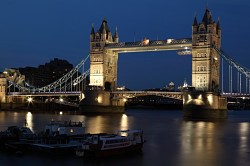 Discover marvelous architecture in London
Discover marvelous architecture in London
